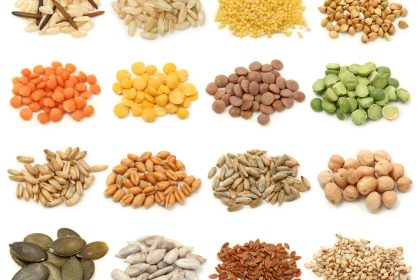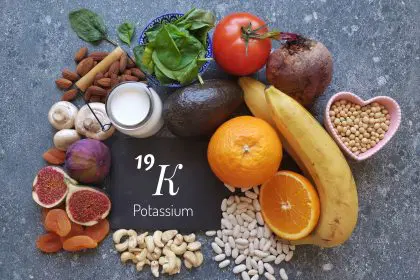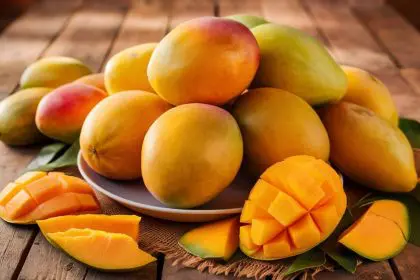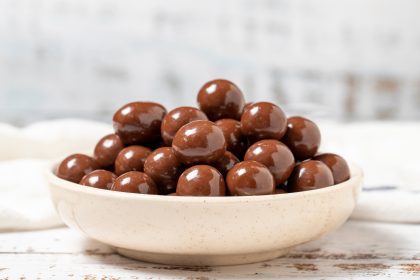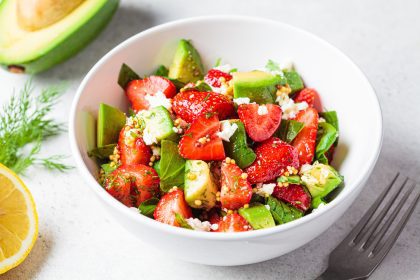High blood pressure silently threatens millions of lives worldwide, earning its reputation as the invisible killer that damages arteries and strains the heart without obvious warning signs. While traditional medications remain essential for many people managing hypertension, groundbreaking research reveals that certain everyday foods contain natural compounds capable of producing remarkable cardiovascular benefits that rival pharmaceutical interventions.
The discovery centers around flavan-3-ols, powerful plant-based molecules that work within the body to improve blood vessel function and reduce pressure on arterial walls. These naturally occurring compounds represent a fascinating intersection between nutrition and medicine, offering hope for people seeking complementary approaches to managing their cardiovascular health.
Recent comprehensive analysis of 145 randomized controlled trials has illuminated the impressive potential of these natural compounds, demonstrating their ability to enhance endothelial function with results comparable to established hypertension medications. This breakthrough research opens new possibilities for incorporating therapeutic nutrition into comprehensive heart health strategies.
1. Dark chocolate delivers cardiovascular protection
Dark chocolate emerges as one of the most potent sources of flavan-3-ols, containing concentrated levels of these beneficial compounds that can significantly impact blood pressure regulation. The key lies in choosing high-quality dark chocolate with minimal processing, as the manufacturing process directly affects the retention of these valuable molecules.
The flavan-3-ols in dark chocolate work by improving the function of the endothelium, the delicate inner lining of blood vessels responsible for regulating blood flow and pressure. When these cells function optimally, they produce nitric oxide, a molecule that helps blood vessels relax and expand, naturally reducing the pressure required to pump blood throughout the body.
However, not all chocolate provides equal benefits. Milk chocolate and heavily processed varieties contain significantly lower levels of flavan-3-ols due to added sugars, dairy, and extensive processing that destroys many beneficial compounds. The ideal choice involves dark chocolate with at least 70% cocoa content, consumed in moderate amounts to maximize health benefits while avoiding excessive calories.
2. Green and black tea provide daily protection
Tea consumption offers one of the most accessible ways to incorporate flavan-3-ols into daily routines, with both green and black varieties containing substantial amounts of these cardiovascular-protective compounds. The brewing process extracts these molecules from tea leaves, creating a beverage that delivers therapeutic benefits with every cup.
Green tea typically contains higher concentrations of certain flavan-3-ols, particularly catechins, which demonstrate powerful antioxidant properties alongside their blood pressure-lowering effects. Black tea, while containing different profiles of these compounds due to processing differences, still provides significant cardiovascular benefits when consumed regularly.
The preparation method influences the final concentration of beneficial compounds in the finished beverage. Steeping tea for appropriate periods allows maximum extraction of flavan-3-ols, while adding excessive sugar or artificial flavors can diminish the overall health benefits. Plain tea consumption provides the most concentrated delivery of these natural therapeutic compounds.
3. Apples offer convenient heart health support
Fresh apples contain meaningful amounts of flavan-3-ols, particularly concentrated in the skin, making them an excellent portable source of cardiovascular-protective compounds. The natural combination of these molecules with fiber and other beneficial plant compounds creates a synergistic effect that supports overall heart health.
The flavan-3-ols in apples contribute to improved endothelial function while providing additional antioxidant protection against cellular damage that can contribute to cardiovascular disease development. Regular consumption of whole apples, rather than processed apple products, ensures maximum benefit from these natural compounds.
Processing significantly reduces the flavan-3-ol content in apple products, making fresh fruit consumption the preferred method for obtaining therapeutic benefits. Apple juice, particularly clear varieties, contains substantially lower levels of these beneficial compounds compared to whole fruit consumption.
4. Grapes deliver dual cardiovascular benefits
Grapes provide flavan-3-ols alongside other cardiovascular-protective compounds, creating a natural combination that supports multiple aspects of heart health. The skin of grapes contains particularly high concentrations of these beneficial molecules, making whole grape consumption more effective than grape juice for therapeutic purposes.
Red and purple grapes typically contain higher levels of flavan-3-ols compared to green varieties, though all types provide meaningful amounts of these compounds. The natural combination of flavan-3-ols with resveratrol, another powerful cardiovascular compound found in grape skins, creates enhanced protective effects.
Wine production concentrates some of these compounds, though the alcohol content and processing methods can affect the final therapeutic value. Fresh grape consumption provides the most straightforward way to obtain flavan-3-ols without additional substances that might complicate their health effects.
5. Additional heart-protective compounds expand options
Beyond flavan-3-ols, numerous other natural compounds demonstrate impressive cardiovascular benefits, expanding the options available for people seeking nutritional approaches to heart health management. These diverse molecules work through different mechanisms to support healthy blood pressure and overall cardiovascular function.
Resveratrol, found abundantly in grape skins and red wine, demonstrates potential for improving blood pressure control through its effects on blood vessel flexibility and inflammation reduction. This compound works synergistically with flavan-3-ols to provide enhanced cardiovascular protection when consumed together.
Curcumin, the active compound in turmeric, shows promise for reducing arterial stiffness and improving overall cardiovascular health. Berberine provides lipid-lowering abilities that complement blood pressure management, while omega-3 fatty acids from fish and seeds help stabilize heart rhythms and reduce inflammation throughout the cardiovascular system.
Understanding endothelial function importance
The endothelium represents one of the most critical components of cardiovascular health, functioning as the interface between blood and vessel walls throughout the entire circulatory system. This thin layer of cells controls numerous vital functions including blood clotting, inflammation response, and most importantly for blood pressure management, vessel dilation and constriction.
Healthy endothelial function allows blood vessels to respond appropriately to changing demands, expanding when increased blood flow is needed and maintaining appropriate pressure levels throughout the cardiovascular system. When endothelial function becomes impaired, blood vessels lose their ability to regulate pressure effectively, contributing to hypertension development.
Flavan-3-ols improve endothelial function by supporting nitric oxide production, a crucial molecule that signals blood vessels to relax and expand. This natural vasodilation reduces the pressure required to maintain adequate blood flow, effectively lowering overall blood pressure without pharmaceutical intervention.
Maximizing natural compound benefits
The therapeutic potential of flavan-3-ols and other natural cardiovascular compounds depends heavily on consumption patterns, food preparation methods, and overall dietary context. These factors significantly influence the bioavailability and effectiveness of beneficial molecules within the body.
Consistent daily consumption appears more beneficial than sporadic intake of large quantities, allowing the body to maintain steady levels of protective compounds while avoiding potential adverse effects from excessive consumption. Combining multiple sources of flavan-3-ols throughout the day creates sustained cardiovascular protection.
Food processing dramatically affects compound concentrations, with minimal processing preserving the highest levels of beneficial molecules. Fresh, whole foods provide superior therapeutic value compared to processed alternatives, making dietary choices crucial for maximizing health benefits.
Integration with comprehensive heart health
Natural compounds like flavan-3-ols work most effectively as part of comprehensive cardiovascular health strategies that include appropriate medical care, regular physical activity, stress management, and overall dietary quality. These natural approaches complement rather than replace established medical treatments for hypertension.
The synergistic effects of combining multiple heart-healthy foods create enhanced protection beyond what individual compounds provide alone. A diet rich in various sources of beneficial plant compounds supports cardiovascular health through multiple pathways simultaneously.
Long-term consistency in consuming foods rich in flavan-3-ols and other protective compounds appears crucial for sustained cardiovascular benefits, with regular intake over months and years producing the most significant improvements in endothelial function and blood pressure regulation.



